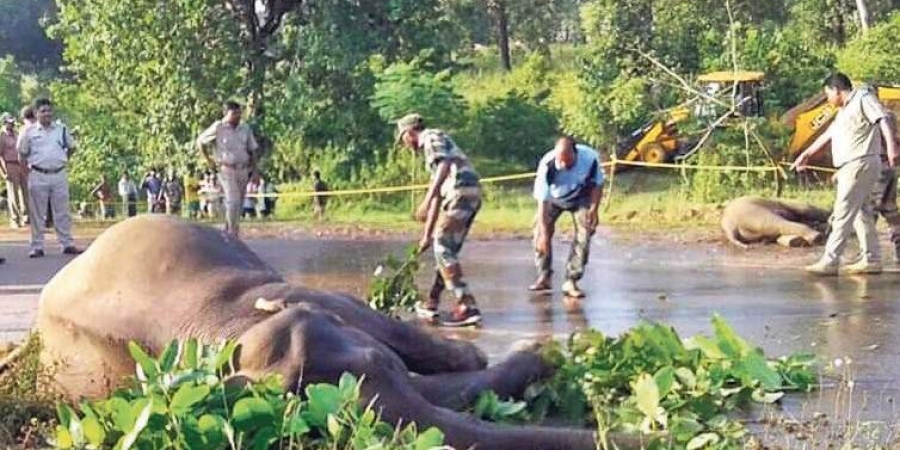Keonjhar: Rapid deforestation, rampant mining, poaching, electrocution and road accidents are some of the major factors posing risk to elephants in mineral rich Keonjhar district.
The forest department has taken up measures for protection of elephants, but incidents of elephant casualties have not been checked while several elephant corridor projects including Baitarani elephant conservation project in the district remain unexecuted over years, a report said.
Habitat loss coupled with fodder shortage in declining forested pockets often forces the animals to stray out of their habitats into human settlements, resulting in man-animal conflicts.
In the current year, five elephants have died in the district for various reasons. Lack of monitoring on the movement of elephants under Keonjhar forest division recently came to light. Two elephants were found electrocuted by poachers in Joda section of Champua range June 14. A forester and a forest guard had been suspended June 18 for negligence in duty. The state government had ordered a Crime Branch probe into the elephant deaths, but it has not started as yet.
According to reports, for safety of elephants, a corridor had been planned in a forest area of 10,000 hectares in four districts. It was named as Baitarani elephant conservation project about 22 years ago. Sadly, the project had been caught in red tape.
No step was taken on other elephant corridor projects like Karo-Kamarpada under Barbil range and Telkoi-Palahada elephant corridor under Telkoi range. Lakhs of rupees had been spent on identifying an area for the elephant corridor comprising Karo-Karmapada and Kardangi-Kakudiamba. The elephant corridor was planned for a 32-km stretch from Kardangi to Kakudiamba.
Some wildlife experts and environmentalists say, the district was once rich with dense forests, but they have depleted over years due to mining and timber smuggling.
The hilly and forested pockets like Thakurani, Roida, Mahaparvat, Roida, Kalaparvat, Gandhmardhan, Khandadhar, Baula, Daitari, Baitarani and Siddhamath used to be major elephant habitats in the district. However, over years, these habitats have been badly damaged by mining, becoming unsafe for elephants.
Apart from mineral mining, quarrying of grantite, laterite, murram, and other minor minerals are said to be responsible for the thinning of the forest cover.
Wildlife conservator(Honourary) Harekrushna Mohant said there is a need for sufficient food in the areas where forest cover is waning.
Locals observed that had the project been executed, the district would not be seeing man-animal conflicts.
Statistics have it that since 2010 till date, Keonjhar forest division alone has reported 51 elephant deaths. In 2010-11, the district saw deaths of nine elephants while four died in 201-12.
Nine elephants died in 2012-13; four each in 2013-14 and 2014-15; six in 2015-16; two each in 2017-18 and 2018-19; six in 2019-20 and five in 2020-21(till date).
According to official data, there are 105 elephants in the Keonjhar division.
Upset over elephant casualties, environmentalist and honourary wildlife warden Harekrushna Mohant said, “Rampant mining, and declining forest cover resulted in loss of habitat and shortage of fodder threatening elephants’ safety.”
He added that increasing movement of mineral-laden vehicles, encroachment of forests, infrastructure development projects such as roads and railways and industrial units in the forested pockets have posed serious threat to animals, which stray out and enter villages, leading to man-elephant conflicts.
Experts suggested that underpasses, overpasses, check gates and bridges should be incorporated into a development plan in the forested pockets to mitigate elephant casualties.
Additional conservator of forests, Ghanashyam Mohant said.”The department has taken tough stand on protection and safety of elephants. 24X7 patrolling and monitoring have been intensified.”
PNN
